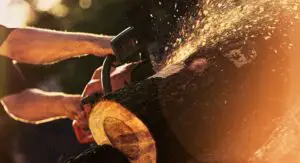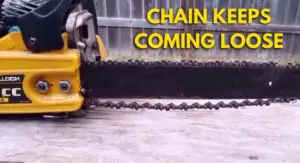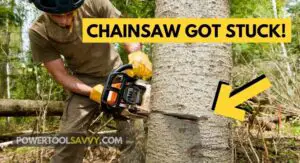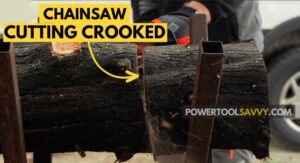Frustrating, isn’t it? 💢
When your chainsaw keeps burning the wood rather than cutting it through!
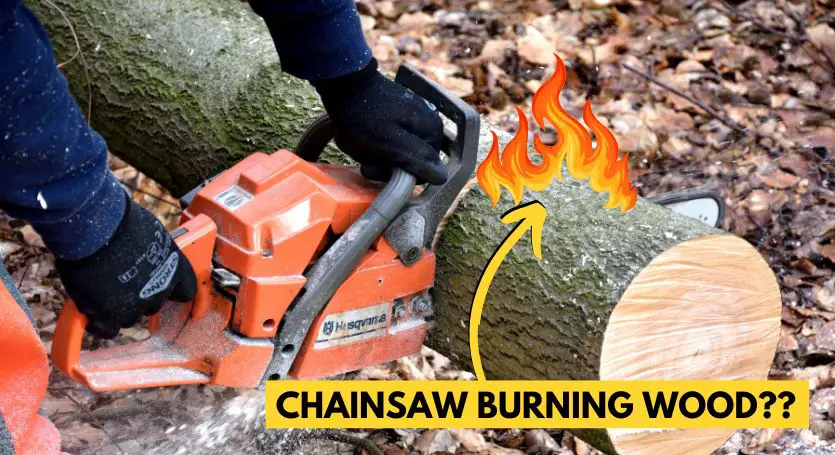
But have you ever wondered why this happens? 🤔
If your chainsaw is burning the wood instead of cutting, it’s most likely due to a dull chain. However, other factors such as wrongly set rakers, a faulty oiling system, an incorrectly mounted chain, or excessive chain tension can also contribute to this issue.
Now the question is – How do you fix it?
Well, that’s what I’ll explain in this article.
Btw, I’m Sam and I’ve more than two decades of experience in chainsawing.
In this article, I’m going to share all my tips & tricks with you so that your chainsaw will be cutting like a PRO in no time!
Are you READY??
Let’s get started!
Table of Contents
ToggleYou are Using a Dull or Worn OUt Chain
A dull or blunt chain is most probably the reason why your chainsaw is burning the wood instead of cutting through!
Let me explain:
A sharp chain can easily glide through wood fibers, giving you smooth cuts like slicing through butter.
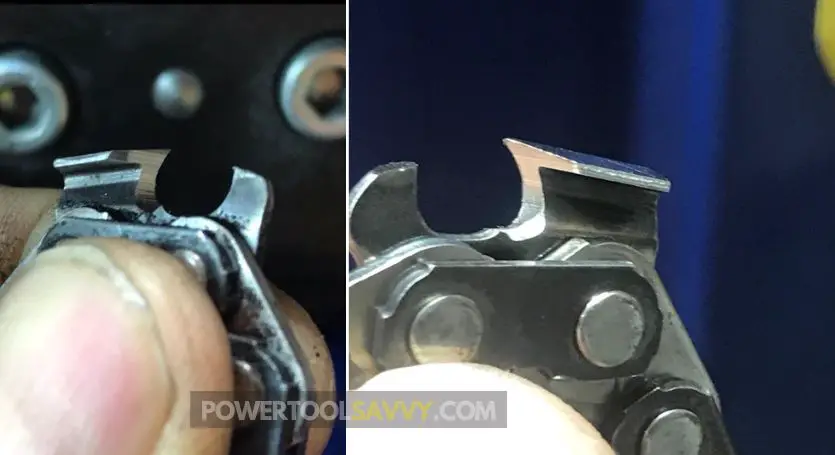
But when the chain gets dull & the cutters lose their power, it’ll keep grinding on the wood instead of cutting.
This grinding creates excessive friction & heat, which can burn the wood.
Signs that Your Chainsaw Chain is Dull
Here are 5 “easy-to-spot” signs that your chainsaw chain is dull: 👇
- Your saw produces powdery sawdust instead of wood chips.
- Your saw doesn’t pull itself into the cut. Instead, you have to push it too hard when cutting.
- Your chainsaw cuts crooked. This indicates that one side of your chain might be dull.
- Smoke comes out of your saw while cutting. This is another strong indicator that your chainsaw chain needs sharpening.
- Look for visual clues like blunted cutters, burred tooth edges, or dirt buildup on the cutting surfaces. You can even feel the dullness with your fingers (but be careful!).
Check out this article where I’ve explained these signs in more detail!
How to Fix This?
If your chainsaw chain is actually dull, you need to get it sharpened!
Here’s a video tutorial that explains how to sharpen a chainsaw chain the easiest way: 👇
If it seems too complicated, you could also have it sharpened by a professional! (Here’s how much a professional sharpening would cost!)
However, if your chain is damaged or worn-out, it’s a GOOD idea to consider replacing it before it causes more damage to your saw.
Read this article for a complete guide on replacing your chainsaw chain!
The Rakers on Your Chain aren't Set Correctly
Even if your chain is razor sharp, it might struggle to cut through the wood and even cause it to burn.
Why? Because the rakers (also referred to as the “depth gauges“) aren’t set properly!
Sounds confusing? Let me break this down for you!
The rakers are like little metal guards on your chain that sit just in front of the cutting teeth. They act as guides, determining how deep the cutting teeth can bite into.
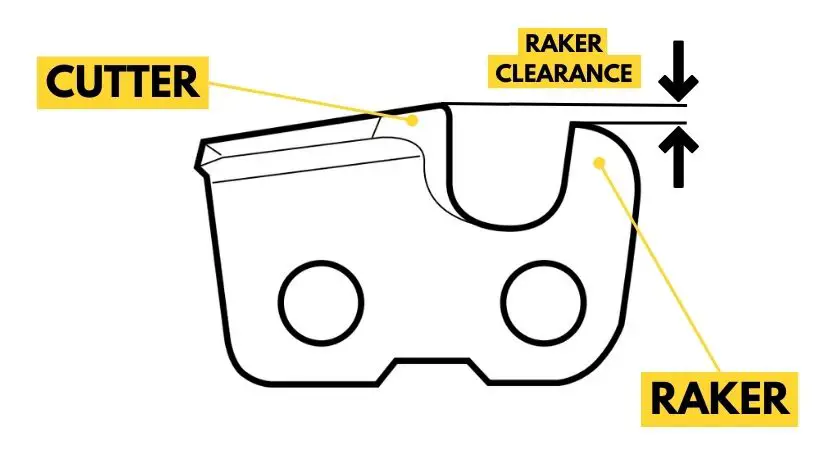
As you file the cutting teeth on your chain, you remove some material, making the teeth smaller. This process gradually reduces the height difference between the teeth and the rakers (which is called the “raker clearance“).
And when the rakers become taller than the cutting teeth, your chain won’t cut effectively. Instead, it’ll scrape & burn the wood.
That’s why every time you sharpen your chain, you need to adjust the rakers on your chain accordingly. I personally do it once every 3 maintenance sharpening!
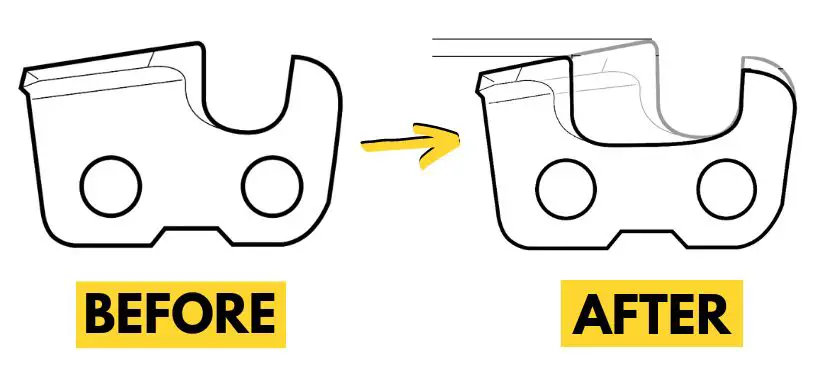
How to Set the Rakers?
Well, it’s not that complicated!
All you need is a “depth gauge tool“, and a flat file!
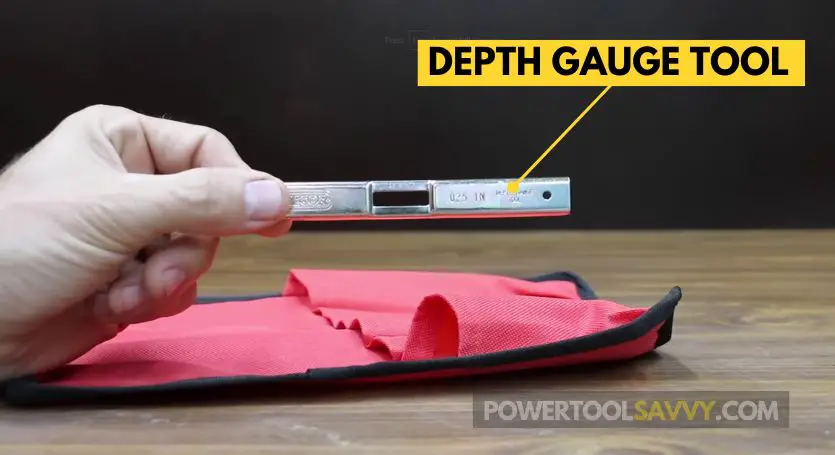
Follow the steps below to set the rakers evenly:
- Put the depth gauge tool over the raker lip.
- Place the flat file on the gauge & file off any extra part of the raker that sticks out from the hole.
- You’ll know the raker is set right when you don’t feel any resistance.
- Do the same for all the rakers on your chainsaw chain.
Here’s a detailed video of the entire process:
Your Chainsaw isn't Oiling the Bar & Chain
Another potential problem that can cause your chainsaw to burn the wood is inadequate oiling of the chain and bar.
When there isn’t enough lubrication, the friction between the chain, bar, and wood increases during cutting, leading to a rise in temperature that can cause the wood to burn.
How to Check if Your Chainsaw is Oiling?
Here’s a COOL way to check if your chainsaw is oiling: 👇
- Turn your chainsaw ON & let it run for a minute.
- Then point the nose of your bar over a piece of cardboard (any light-colored surface would do the job!) & rev it UP.
- If your saw is oiling, you should see tiny drops of oil on the surface (as shown in this image).
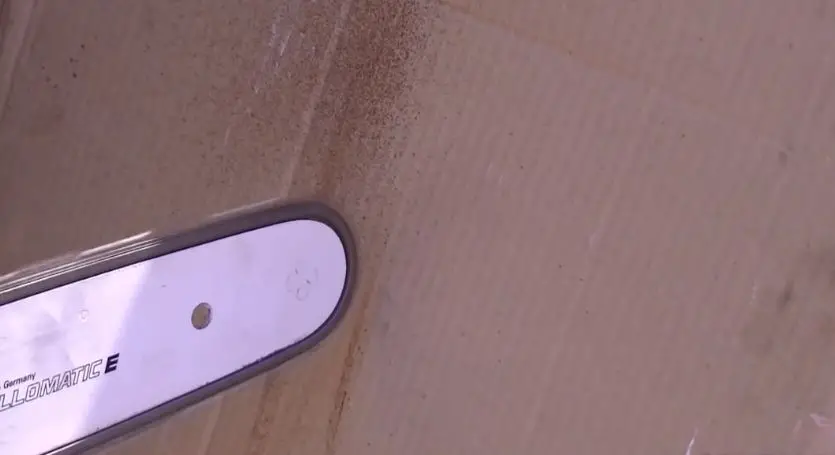
If you don’t see any droplets of oil, it’s a clear indication that your chainsaw isn’t oiling.
You should also watch for other signs like –
- excessive vibration,
- the chain frequently coming loose,
- your saw producing smoke, or
- having difficulty cutting through wood.
How to Fix a Chainsaw that's Not Oiling?
If you find out that your chainsaw isn’t oiling, here’s how to fix it: 👇
- Check the oil tank first. If it’s empty (or nearly empty), refill it with a good quality bar & chain oil.
- Clean the oiler holes. If the tank is full but you’re still not getting any oil flow, check if the oiler holes are clogged up. Clean the holes with a pick or compressed air.
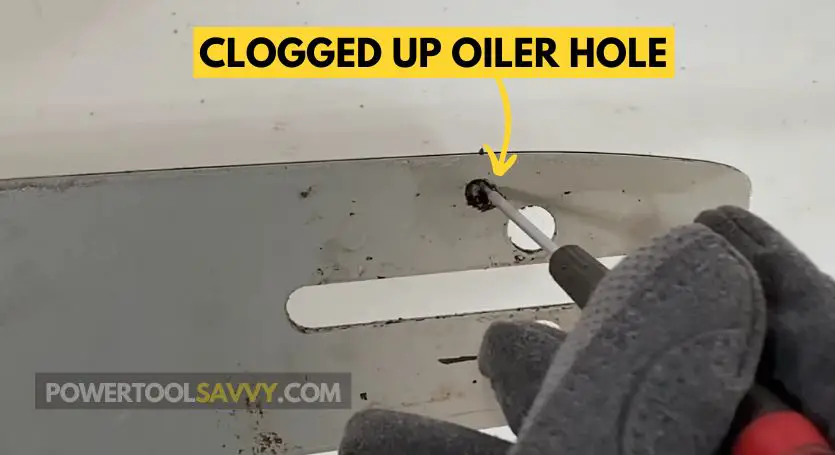
- Check if the oil pump is working. Run your saw without the bar & chain, and check if oil is coming out of the oiler holes. If NOT, it’s an indication of a faulty oil pump. Get your saw checked by a professional.

You Installed the Chain Backward
If your chainsaw is oiling just fine but still it’s burning the wood instead of cutting it, you might have mounted the chain backward!
What does that mean?? 🤔
A chainsaw chain only works when installed in one specific direction. It rotates clockwise (if seen from the right side). In other words, it goes toward the tip of your bar.
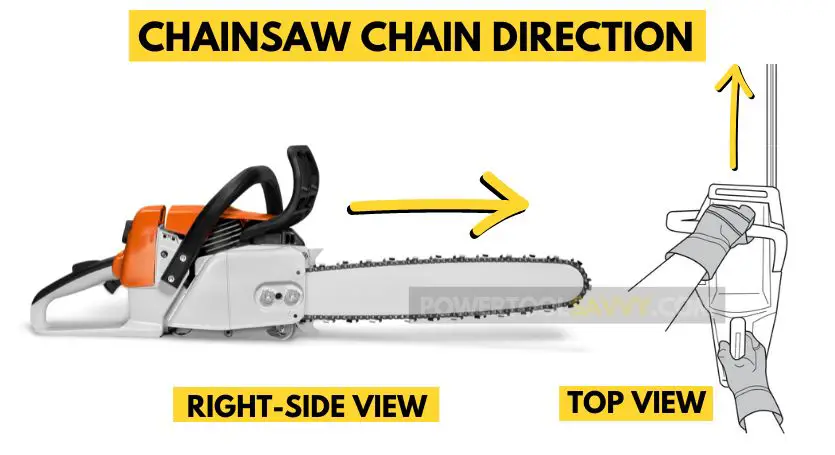
So, when you put the chain on your chainsaw, you need to make sure that the cutting teeth are pointing forward.
If you do it wrong, it won’t cut & can end up burning the wood instead.
How to Check if Your Chain is On Backward?
Here’s how a correctly-mounted chain should look from the right side: 👇
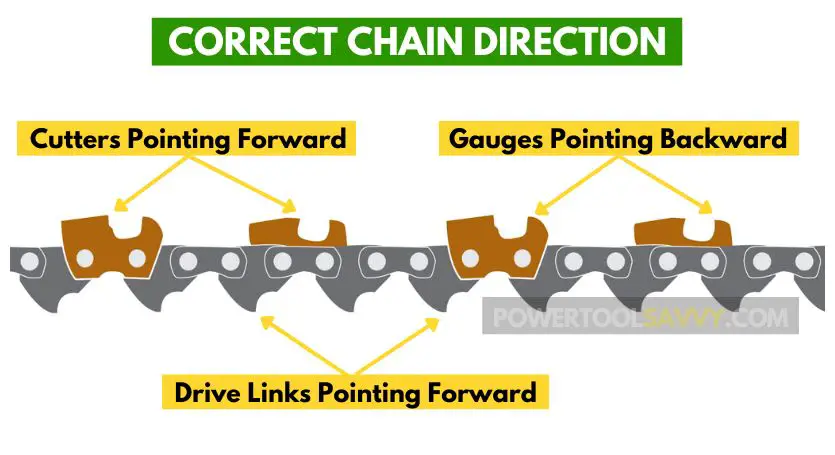
- The cutters are pointing toward the tip of the bar.
- The depth gauges are facing backward.
- The drive links are pointing forward.
If your chain doesn’t look like this, it’s 100% on backward.
Learn More: Correct Chainsaw Chain Direction
You Overtightened the Chain
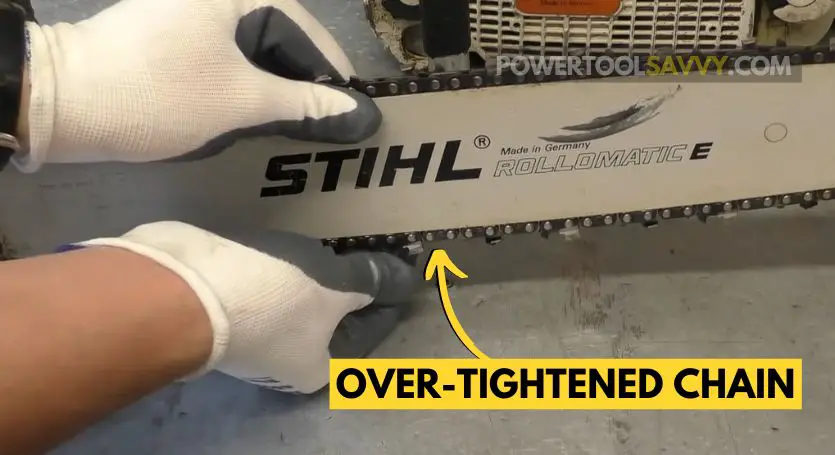
Here’s the thing:
Keeping your chainsaw chain tight is important, but some people take it too far. They tighten it excessively, thinking it’s better, but that’s not the case!
If your chain is too tight, it can push too hard against the wood, which leads to burning rather than cutting.
So, how can you tell if your chainsaw chain is too tight?
Look for these signs:
- Smoke and sparks when cutting.
- Burned marks on the edges of your guide bar.
- A loud, high-pitched screeching sound during cutting.
- Your chain getting stuck in the bar or not moving.
- Poor cutting performance.
How Tight Should Your Chain Be?
Your chainsaw chain should be tight, but not too tight.
Here’s a simple test: you shouldn’t be able to pull more than 3/4 of the drive links out, but it also shouldn’t sag below the bar.
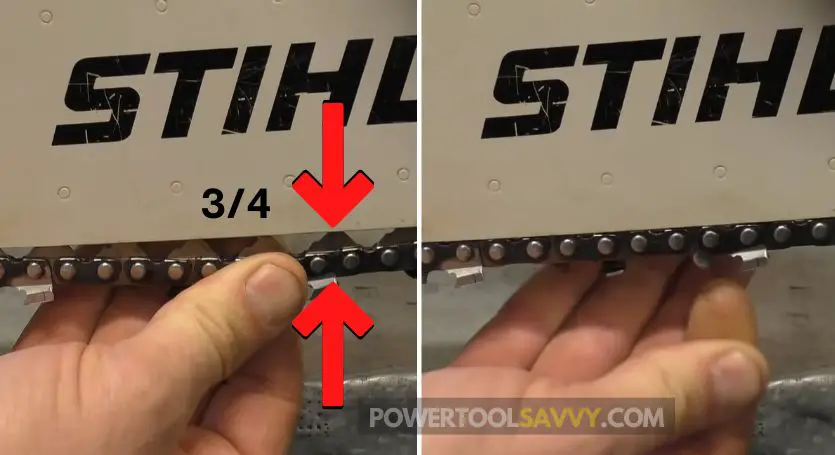
Also, you need to check if you’re able to pull the chain around the bar with your hands. Otherwise, it’d be considered as “too tight.”
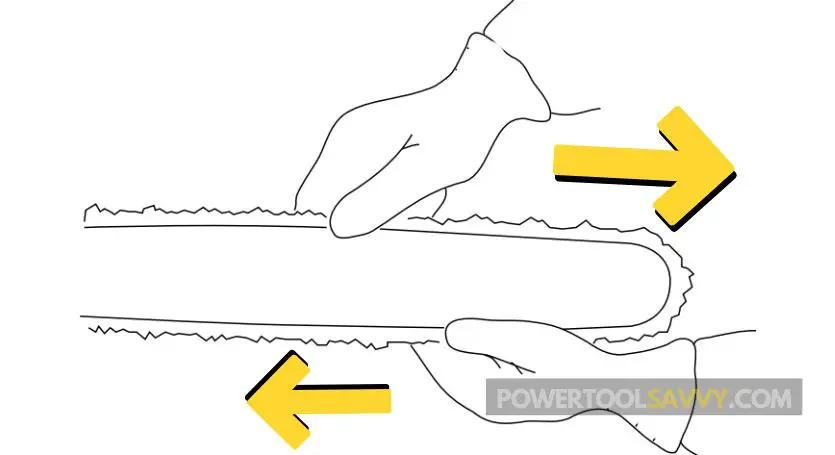
For more in-depth knowledge, check out this article, where I’ve discussed how tight should a chainsaw chain be in great detail!
And if you don’t know how to tighten a chainsaw chain, this article is for you!

